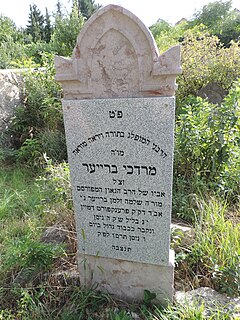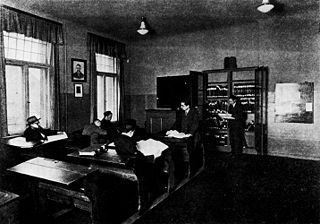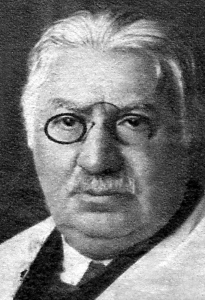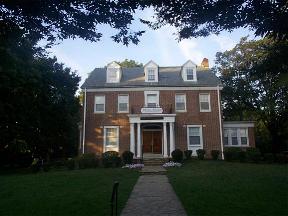This article relies largely or entirely on a single source .(July 2013) |
Israel ben Solomon Wahrmann was the first officially recognized rabbi of Pest, Hungary.
This article relies largely or entirely on a single source .(July 2013) |
Israel ben Solomon Wahrmann was the first officially recognized rabbi of Pest, Hungary.
Wahrmann was born at Óbuda (year unknown). In 1799 he was called to the rabbinate of Pest, and was the first officially recognized rabbi of the community, which developed rapidly under his leadership. His insistence in the matter prompted the drafting of the community's first statutes. The most important institution connected with his name is the Nationalschule, an elementary school dedicated on 8 September 1814, which was an important factor in raising the intellectual status of the community, its curriculum including Hungarian, modern science, and Hebrew. Wahrmann published only one sermon, in German and entitled Andachtsübung der Israeliten der Königlichen Freistadt Pesth.
Wahrman died in Budapest on 24 June, 1824. The sorrow at his death found expression in Philip Weil's Hebrew and German poem Evel Yisrael, oder Totenfeier.
This is a timeline of the development of Jews and Judaism. All dates are given according to the Common Era, not the Hebrew calendar.

Azriel Hildesheimer was a German rabbi and leader of Orthodox Judaism. He is regarded as a pioneering moderniser of Orthodox Judaism in Germany and as a founder of Modern Orthodox Judaism.

Marcheshvan, sometimes shortened to Cheshvan, is the second month of the civil year, and the eighth month of the ecclesiastical year on the Hebrew calendar.
Chief Rabbi is a title given in several countries to the recognized religious leader of that country's Jewish community, or to a rabbinic leader appointed by the local secular authorities. Since 1911, through a capitulation by Ben-Zion Meir Hai Uziel, Israel has had two chief rabbis, one Ashkenazi and one Sephardi.

Neologs are one of the two large communal organizations among Hungarian Jewry. Socially, the liberal and modernist Neologs had been more inclined toward integration into Hungarian society since the Era of Emancipation in the 19th century. This was their main feature, and they were largely the representative body of urban, assimilated middle- and upper-class Jews. Religiously, the Neolog rabbinate was influenced primarily by Zecharias Frankel's Positive-Historical School, from which Conservative Judaism evolved as well, although the formal rabbinical leadership had little sway over the largely assimilationist communal establishment and congregants. Their rift with the traditionalist and conservative Orthodox Jews was institutionalized following the 1868–1869 Hungarian Jewish Congress, and they became a de facto separate denomination. The Neologs remained organizationally independent in those territories ceded under the terms of the 1920 Treaty of Trianon, and are still the largest group among Hungary's Jews.

Hebrew literature consists of ancient, medieval, and modern writings in the Hebrew language. It is one of the primary forms of Jewish literature, though there have been cases of literature written in Hebrew by non-Jews. Hebrew literature was produced in many different parts of the world throughout the medieval and modern eras, while contemporary Hebrew literature is largely Israeli literature. In 1966, Agnon won the Nobel Prize for Literature for novels and short stories that employ a unique blend of biblical, Talmudic and modern Hebrew, making him the first Hebrew writer to receive this award.
Judah Wahrmann, was a Hungarian rabbi; son of Israel Wahrmann. He was appointed associate rabbi and teacher of religion at the gymnasium of Budapest on 9 February 1851, and was the author of Ma'areket ha-Ha'ataḳot and Dat Yehudah, Mosaische Religionslehre.
The history of responsa in Judaism, spans a period of 1,700 years. Rabbinic responsa constitute a special class of rabbinic literature, differing in form, but not necessarily in content, from Rabbinic commentaries devoted to the exegesis of the Bible, the Mishnah, the Talmud, and halakha. The codes themselves contain the rules for ordinary incidents of life. The responsa literature covers all these topics and more.

The World Union for Progressive Judaism (WUPJ) is the international umbrella organization for the various branches of Reform, Liberal and Progressive Judaism, as well as the separate Reconstructionist Judaism. The WUPJ is based in 40 countries with 1,275 affiliated synagogues, of which 1,170 are Reform, Progressive, or Liberal and 105 Reconstructionist. It claims to represent a total of some 1.8 million people, both registered constituents and non-member identifiers. The WUPJ states that it aims to create common ground between its constituents and to promote Progressive Judaism in places where individuals and groups are seeking authentic, yet modern ways of expressing themselves as Jews. It seeks to preserve Jewish integrity wherever Jews live, to encourage integration without assimilation, to deal with modernity while preserving the Jewish experience, and to strive for equal rights and social justice.

The history of the Jews in Europe spans a period of over two thousand years. Some Jews, a Judaean tribe from the Levant, migrated to Europe just before the rise of the Roman Empire. A notable early event in the history of the Jews in the Roman Empire was Pompey's conquest of Judea beginning in 63 BCE, although Alexandrian Jews had migrated to Rome before this event.

The Budapest University of Jewish Studies is a university in Budapest, Hungary. It was opened in 1877, a few decades after the first European rabbinical seminaries had been built in Padua, Metz, Paris and Breslau. Still, it remains the oldest existing institution in the world where rabbis are graduated.

SolomonBreuer was a Hungarian-born German rabbi, initially in Pápa, Hungary, and from the early 1890s in Frankfurt as a successor of his father-in-law Samson Raphael Hirsch.

The Hildesheimer Rabbinical Seminary was founded in Berlin on 22 October 1873 by Rabbi Dr. Israel Hildesheimer for the training of rabbis in the tradition of Orthodox Judaism.
Erlau, is a Haredi dynasty of Hungarian origin, which follows the teachings of the Chasam Sofer and is often considered Hasidic.

Adolf Fényes, originally Fischmann was a Hungarian painter of Jewish ancestry. He is best known for his cycle of paintings; The Life of a Poor Man and a series of still-lifes, done as table settings.

The Schism in Hungarian Jewry was the institutional division of the Jewish community in the Kingdom of Hungary between 1869 and 1871, following a failed attempt to establish a national, united representative organization. The founding congress of the new body was held during an ongoing conflict between the traditionalist Orthodox party and its modernist Neolog rivals, which had been raging for decades.

Few Jews arrived in Baltimore, Maryland, in its early years. As an immigrant port of entry and border town between North and South and as a manufacturing center in its own right, Baltimore has been well-positioned to reflect developments in American Jewish life. Yet, the Jewish community of Baltimore has maintained its own distinctive character as well.

Even Yisrael is a former courtyard neighborhood in Jerusalem, Israel. Built in 1875, it was the sixth Jewish neighborhood to be established outside the Old City walls. It is now part of the Nachlaot neighborhood. In 2004 the neighborhood underwent preservation and renovation by the Jerusalem Municipality, which re-paved and re-landscaped the central courtyard and added a small stone amphitheater for tour groups and daytime passersby.

Tobias Jakobovits was a Rabbi, historian and Czech librarian, historian of Czech Jewry, and an expert in ancient Hebrew manuscripts. He was the chief librarian of the Prague Jewish community in the inter-war period, and the professional manager of the Jewish Museum in Prague during the Nazi Occupation. He was deported to the Auschwitz concentration camp in the fall of 1944 and exterminated there along with his wife.